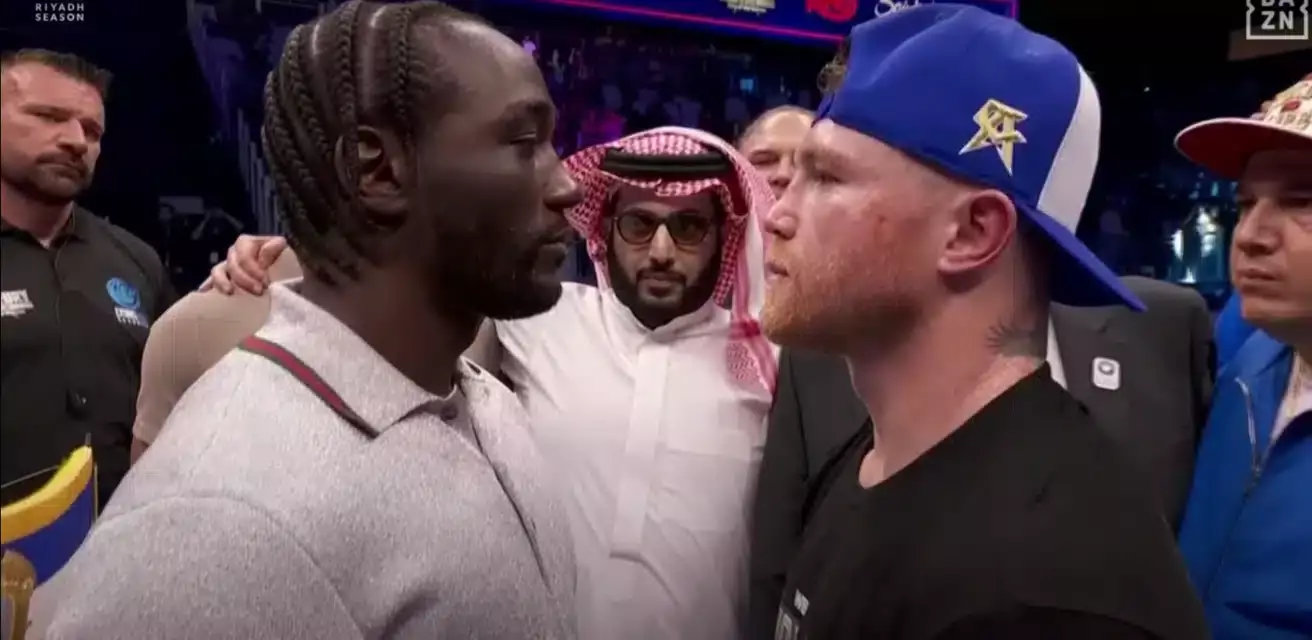The upcoming September 13 fight between Canelo Alvarez and Terence Crawford has evolved from an oddly amicable prelude into a heated personal rivalry that promises much more than just punches thrown in the ring. Initially, the pair surprised many by displaying sportsmanship—reportedly sharing dinner and keeping interactions civil. Yet as the event looms closer, the tension has boiled over into outright nastiness. This shift isn’t just posturing; it signifies how much is at stake when two elite fighters lock horns. The transition from politeness to aggression on display during recent press conferences and face-offs suggests a narrative of pride, challenge, and respect being fiercely tested.
The Psychology Behind the Jabs: More Than Just Words
What has been particularly fascinating is the sharp verbal sparring that has unfolded alongside the physical confrontations, such as the now-public shove between them. Canelo sparked the verbal firestorm by suggesting that Crawford was a “good fighter” stepping up against a “great fighter” — a pointed comment many interpreted as downplaying Crawford’s expertise. This led to Crawford’s sharp and public retort, which cleverly flipped the logic back onto Canelo, highlighting his defeats and implying a pattern of failing when truly challenged.
This exchange is more than mere trash talk; it reveals psychological battle lines. Crawford’s pointed reminder of Canelo’s losses, especially to fighters like Dmitry Bivol and Floyd Mayweather, is an attempt to shake Canelo’s confidence and stake his claim as the better fighter. Meanwhile, Canelo’s insistence on his greatness reveals not only pride but an unwillingness to be belittled by a peer. It’s a classic boxing dynamic: mind games are as crucial as physical preparation.
Legacy at Stake: What This Fight Means for Both Fighters
What elevates this fight beyond a typical super-fight is the underlying narrative about legacy, greatness, and the burden of expectations. Alvarez, long hailed as a pound-for-pound elite boxer, faces persistent scrutiny about whether he truly belongs among the sport’s greatest due to his high-profile losses and controversial draws, particularly against Gennady Golovkin, whose deserved win many felt was denied.
Crawford, on the other hand, enters this fight with a sterling reputation but with a chip on his shoulder about public perception. His pointed remarks make it clear he doesn’t intend to merely share the stage—he wants to dominate it. His assertion that Canelo “lost every time he stepped up” stingingly challenges Alvarez’s status, while also motivating Crawford to prove himself in what many already consider a defining moment of his career.
Clash of Titans: Expectations and What’s at Play
The converging narratives—Canelo’s quest to uphold his multi-weight divisional dominance and Crawford’s drive to affirm himself as the best—create the perfect storm. This fight isn’t just about the belt or bragging rights; it is about crafting or dismantling legacies. Both fighters understand this implicitly; thus, their personal animosity reflects deeper philosophical stakes.
However, while the verbal barbs add intrigue, boxing aficionados hope the animosity remains contained within the ring come fight night. The anticipation is that this rivalry will produce not only fireworks but a technical and tactical spectacle worthy of the hype. Given the skillsets of both fighters—Canelo’s aggressive power and ring IQ opposite Crawford’s slick, versatile style—the clash could very well define 2024’s boxing highlight reel.
The Risk of Overhyping and the Pressure It Brings
Yet, as much as this rivalry fuels excitement, there’s a risk that the narrative of nastiness could overshadow the sport itself. The early ‘too nice’ interactions were genuine and refreshing in a sometimes toxic sport culture, and escalating antagonism—while engaging—might pressure both athletes into prioritizing drama over pure boxing. Fans must hope the fighters channel their rivalry into performance rather than petty squabbles.
Moreover, the stakes and public scrutiny place a heavy mental burden on both fighters. Crawford’s direct insults could be a calculated psychological tactic or an emotional response that might cloud his focus. Similarly, Canelo’s confidence bordering on defiance could become a double-edged sword, either propelling him to greatness or becoming his undoing.
In the final reckoning, what matters most for boxing fans is a contest that transcends pre-fight theatrics, showcasing both fighters at their peak, driven by passion fueled as much by respect as rivalry. If this fight delivers on that promise, it will be talked about for decades—and the animosity leading up to it will be remembered as the spark that ignited a modern classic.

